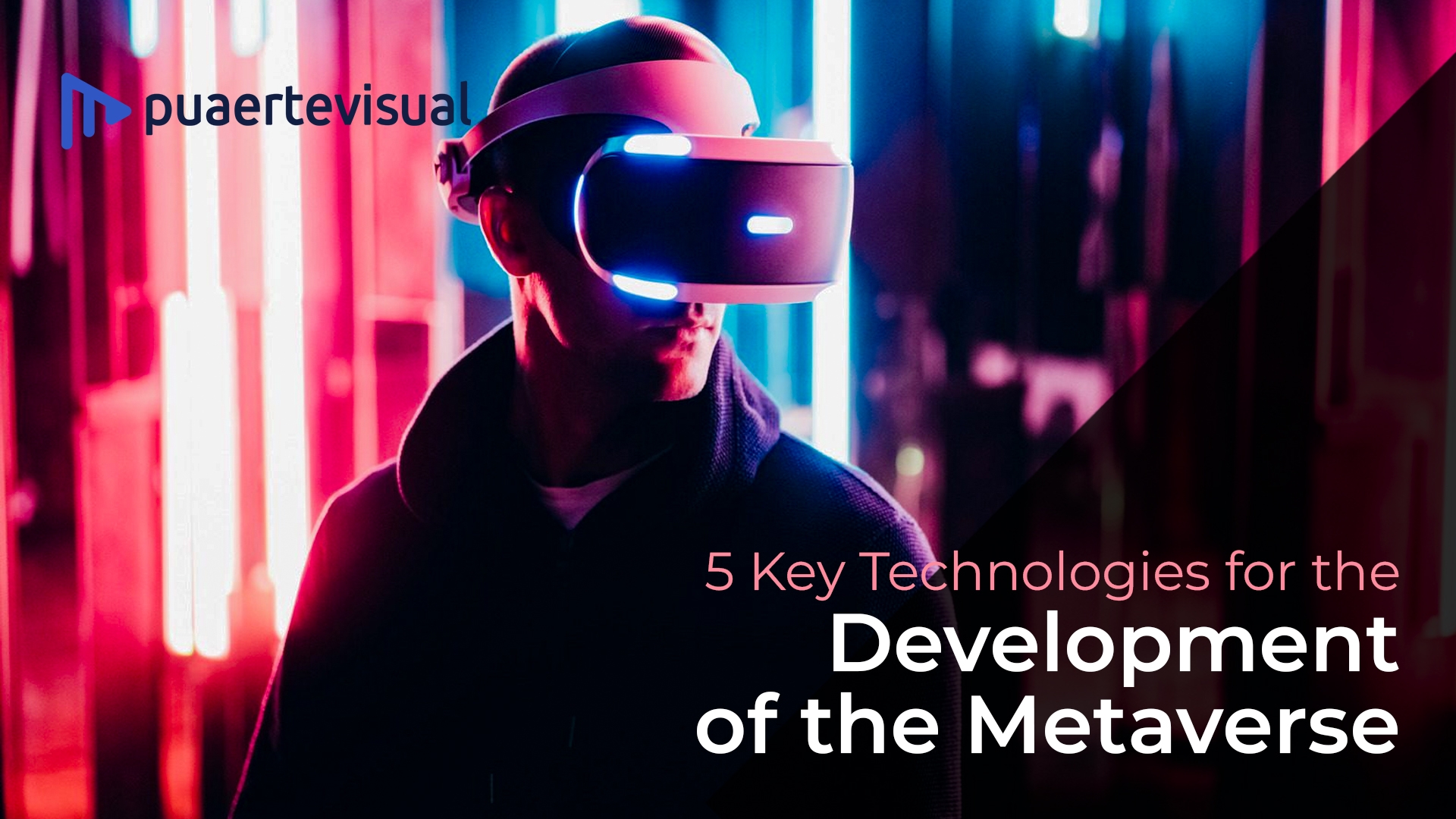
The metaverse technology does not yet exist in its entirety; metaverse-like aspects may be found on various platforms. At the moment, video games give the closest metaverse experience available. Game developers have explored the limits of video games by holding in-game events and creating virtual economies.

What is Metaverse
The metaverse technology is a 3D digital world idea. It is made up of virtual worlds that you may explore with your avatar. You can play Metaverse gaming, go shopping, meet up with pals in a virtual coffee shop, collaborate with colleagues in a virtual workplace, and much more in the metaverse. Certain metaverse features have already been included in the ecosystems of several Metaverse gaming and work socializing programs. The metaverse is a virtual realm in which your avatar may live a synchronous life. The truth is that the possibilities are limitless, as the metaverse is regarded as a practical answer to real-world issues. This can bring the offline and online worlds closer together.

Origin of the Metaverse
Neal Stephenson created the idea “metaverse” in 1992. In his novel “Snow Crash,” Stephenson describes the metaverse as a virtual world where humans communicate with digital avatars.
The term “metaverse” is created by combining the words “meta” and “universe” in the novel. However, the metaverse’s meaning and breadth did not cease evolving in 1992. interactive worlds, sometimes known as early metaverses, were first presented in video games with titles such as Second Life. The actual narrative of the film “Ready Player One” is another example of the metaverse in popular culture. A few firms are now working to make the metaverse a reality.
Importance of Metaverse
These ethical considerations are why it’s critical for company owners to understand the many technologies that are propelling the Metaverse ahead, as well as the impact they may have on users, the environment, and society. Businesses may create new methods to enhance our society with constructive applications of virtual reality connection by comprehending these technologies, which will enrich our world and keep the digital economy growing.
Furthermore, knowing these technologies is critical when more complex strategies for usage in Metaverse initiatives emerge. When it comes to preparing for their next step, business owners must grasp what they need to concentrate on. Businesses must also recognize that as the Metaverse’s environment changes, the kind of content will shift as well.

Metaverse Technologies: 5 Keys to Success
Here is the list of 5 technologies that help to develop the metaverse:
Edge Computing
Edge computing, popular in commercial environments, allows for quicker data transfer with fewer delays, which is essential for high-quality virtual reality experiences.
When millions of individuals across the world are enjoying virtual experiences, the cloud simply cannot manage all of the computing power required to keep the system running. Distributed computing, on the other hand, may bring that processing closer to each user, making the whole experience much more fluid.
AR/VR Technologies
The actual world is merged using digital graphic components and characters. It’s more user-friendly than virtual reality and can be used on practically any smartphone or digital device with a camera. Users may observe their environment with dynamic digital images with AR applications. VR operates in a unique way. It creates a computer-generated virtual environment, similar to the metaverse idea.
The immersive experience users have in the Metaverse is characterized by AR and VR, which would not be conceivable without them. Although the phrases “metaverse” and “virtual reality” are sometimes used interchangeably, there are important distinctions. It’s all about networked VR experiences in the Metaverse. In the future, the Metaverse might grow beyond virtual reality to encompass a wide range of cutting-edge technology.
Artificial intelligence (AI)
AI has the ability to analyze large amounts of data quickly. AI algorithms, when combined with machine learning approaches, may learn from prior iterations and historical data to provide unique outputs and insights.
Artificial intelligence (AI) has been increasingly prevalent in our lives in recent years, with applications including corporate strategy planning, decision-making, face recognition, and speedier computing. AI specialists have recently begun researching the prospects of using AI to create immersive metaverses.
Although extended reality is at the forefront of the Metaverse, artificial intelligence is a crucial technology that helps the magic happen behind the scenes.
3D Modeling
One of the metaverse’s difficulties is to construct a digital environment that resembles our actual world as closely as feasible. It can generate realistic and natural-looking environments using 3D reconstruction. We can bring our environment online by producing accurate 3D photorealistic representations of buildings, actual locations, and things using sophisticated 3D cameras. The 3D spatial data and 4K HD pictures are then sent to computers, which process them and create a virtual replica for people to see in the metaverse.
Hundreds of 3D modeling tools will be essential for companies to develop a Metaverse or VR-related product or service. Apart from creating items from scratch in applications like Blender, sensors can now be used to rebuild objects in 3D. This can aid in the ‘digitization’ of artifacts for usage in virtual worlds.
5G and IoT
The metaverse technology is all about linking virtual worlds, yet networking in virtual reality may use a lot of data. One of the most current mobile advancements, 5G technology, has improved in recent years, giving the power required for real-time data transmissions. People will be able to connect to these AR/VR experiences from everywhere, not just their homes, thanks to 5G. Returning to edge computing, increased bandwidth via 5G implies that VR rendering might be done on an edge device and transmitted to your headset, potentially shrinking the size of VR headsets in the coming years to make them more comfortable for users.
The Internet of Things (IoT) is a system that connects everything in our physical environment to the Internet via sensors and gadgets. These gadgets will have a unique identification and the capacity to send and receive information automatically after connecting to the Internet. Today, the Internet of Things connects thermostats, voice-activated speakers, medical gadgets, and other devices to a variety of data sources. One of the metaverse’s IoT uses is to gather and distribute data from the physical world. This would improve the digital representations’ correctness. IoT data feeds, for example, might alter the behavior of some metaverse objects based on current weather or other variables. IoT may connect the 3D environment to a vast number of real-world devices in a seamless manner. IoT might employ AI and machine learning to handle the data it collects to better enhance the metaverse environment.
Summary
Metaverse technology is a virtual world in three dimensions. Virtual worlds will be available for you to explore using your own avatar. Metaverses offer limitless possibilities since they are regarded as practical solutions to real-world problems. Businesses may create new methods to enhance our society by comprehending these technologies. Edge computing allows for quicker data transfer with fewer delays, which is important for high-quality virtual reality experiences. Those processes may be more readily accessible to each user through distributed computing, creating a more fluid experience. Metaverse could eventually expand beyond virtual reality to embrace a wide range of cutting-edge technologies. Tools for 3D modeling will be required by companies seeking to develop products or services related to the Metaverse. Through 5G, people will have access to these AR/VR experiences no matter where they are, not just at home. A 5G device may render VR content on an edge device and transmit it to your headset due to its increased bandwidth. The Internet of Things (IoT) may connect the 3D environment to a vast number of real-world devices in a seamless manner.
